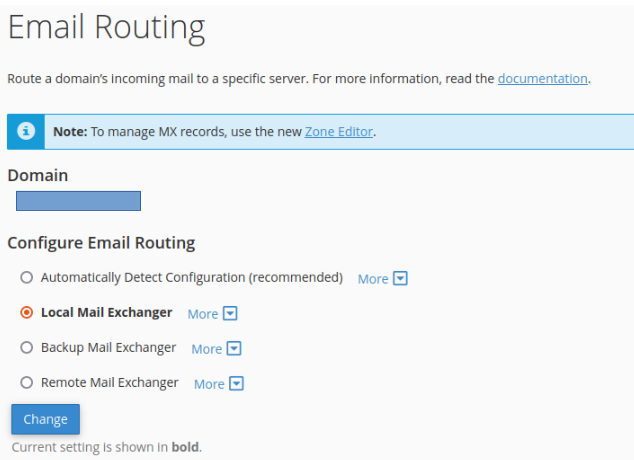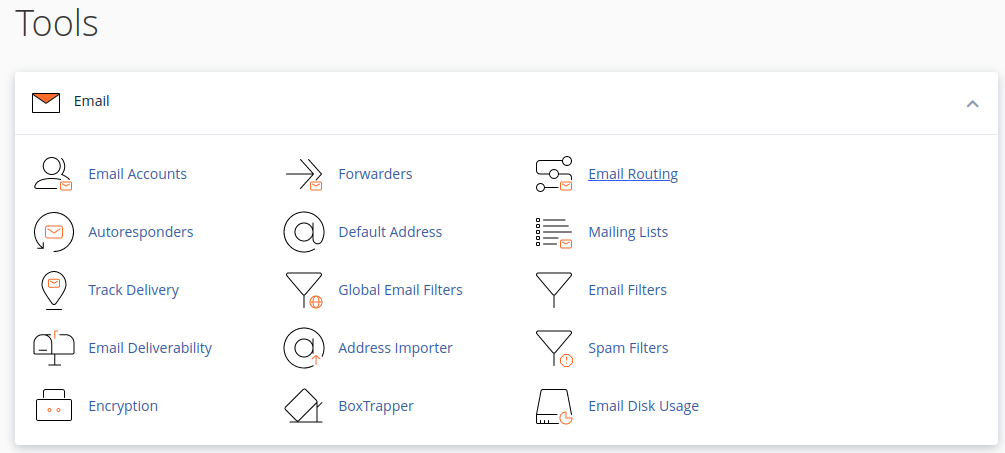Search Our Database
Email Routing for cPanel
Introduction
This process is essential for domain owners who want to manage how incoming emails are processed. Whether you’re using the local email server of your hosting provider or an external email service like G Suite or Office365, understanding and configuring email routing is key to ensuring that your emails are delivered as intended.
Prerequisite
- Access to your cPanel account.
- Basic understanding of email servers and MX Records.
- The domain for which you want to change email routing should be hosted on the cPanel account.
Step-by-step guide
1. Login to cPanel and navigate to the ‘Email’ section and click on the ‘Email Routing’ icon to open the page.
2. You will notice a remark with a link to the Zone editor. If you want to make changes to the mail server records (MX Records), you should do so through the Zone editor.
3. Choose the desired domain from the drop-down menu. If your cPanel account only has one domain, the system automatically selects it for you.
4. After selecting the domain details from the drop-down, you will be able to configure Email Routing using any of the four options given below:
- Automatically Detect Configuration: The system automatically detects what configuration to be selected according to the priorities of your MX records- Local, Backup, or Remote mail Exchanger.
- Local Mail Exchanger: The server will always accept mail for this domain. The system will deliver mail to the local mailbox.
- Backup Mail Exchanger: The server will act as a backup exchanger. The system will hold mail for this domain until a lower number mail exchanger is available.
- Remote Mail Exchanger: The server will not accept mail for this domain. The system sends all mail for this domain to the lowest numbered mail exchanger.
5. Once you have selected the desired version, click on the Change button to apply the changes.
Conclusion
Changing the Email Routing in cPanel is a straightforward process that can significantly impact how your emails are handled and delivered. By following these simple steps, you can customize the email flow to match your specific requirements, ensuring that your email communication remains efficient and reliable.
